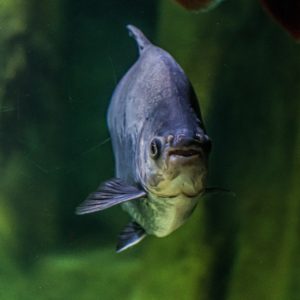Piranhas are seemingly an enigma. When our only exposure to piranhas is from televisions and movies where they are constantly hungry and skeletonizing anything that they cross paths with, it’s hard not to feel afraid of any river we approach for fear that a group of piranhas might suddenly think of us as lunch.
But like sharks, their presentation in media and movies is exaggerated to increase tension. Piranhas aren’t just “bloodthirsty hungry killers” that are on the prowl for any moving meat.
And so, we’re here to set the record straight on some facts about piranhas, and hopefully educate you about piranhas as a whole. They’re not as bad as you think they are! Probably…
Piranhas are indigenous to Latin America
You won’t have to worry about accidentally running into a very hungry group of piranhas anytime soon, unless you live in Latin America. So yes, don’t worry, that river in the city won’t feast on your flesh.
And even if you do live in Latin America, piranhas are mostly located in river systems, lakes, and wetlands that are warm enough to ensure their survival, considering that they are cold-blooded fish.
Some countries, however, capture piranhas and breed them in captivity for home aquariums, and occasionally, carelessness can be how piranhas can be found in some rivers. However, they usually won’t last for long, as they have no group to protect them, and the fact that the rivers of certain countries like the United States can get way too cold for a piranha to survive in.
Piranhas are omnivores
Surprised? Piranhas aren’t just carnivores that can only consume fish or even cows and humans when hungry. When they can, they will also go for plant matter, such as leaves, seeds, and fruit.
Piranhas are scavengers
In addition, piranhas are scavengers. They can eat worms and insects, and some species of piranha are specialized to feed on fish-scales. This means they would nibble on a couple of scales from their target fish, before allowing them to swim off to make a full recovery. They also nibble on the morsels located on the fins of some fish.
Piranhas can be cannibalistic
And to make things weird, piranhas are known to bite off chunks off of their fellow piranhas as well. But they don’t usually do this, especially in the presence of bountiful food.
Instead, it is more of an act of desperation, something that piranhas only do during the dry season when food is scarce.
Piranhas have a powerful bite
Piranhas (specifically in this case, the black piranhas) have a bite force of about 72 pounds, roughly around 3 times their body weight.
Piranhas are attracted to blood
Piranhas are known for being able to smell a drop of blood in 200 liters of water, making them able to hone in on the position of a potential struggling prey.
This is why dipping in water when you have an open wound or are bleeding is heavily discouraged in places where there is a piranha population.
Piranhas are likely more scared of you than the other way around
Piranhas are shy and easily startled, which is a completely different look from the angry and hungry fish that movies show them as. Not even sharks are shy, but piranhas are.
As it turns out, piranhas aren’t exactly thrilled of creatures bigger than it, as they think that they are predators. Unlike sharks, piranhas are not apex predators, and they are frequently preyed upon by birds, caimans, river dolphins, and other larger fish.
Piranhas “bark” as a warning sign
“Dog” may not be the first thing you’d think of when you see a piranha. It seems ridiculous to think about, at first, but there have been anecdotes and observational research from scientists that red-bellied piranhas that have been caught by fishermen were known to make “barking” sounds.
Piranhas usually uses theses “barks” to scare off other fish, or even other piranhas that may be in direct competition with them for food.
Piranhas only attack when desperate… or threatened
Most piranha species are rarely ever aggressive to humans. The only time you’re most likely to be attacked by a piranha is if they are hungry and desperate for food (which happens most often during the dry season when there is little to no food to go around, especially among groups) or if their nests and spawn are threatened (which basically makes piranhas go into supermom and superdad mode to protect them like most wild animals do). Keep away from their nests and the waters during the dry season, and more often than not, piranhas will simply leave you alone.
Piranhas group together for protection
At first, it might seem like piranhas group together as a showcase of strength, especially when certain piranhas (most notably, the red-bellied piranhas) are particularly known as pack hunters.
Theoretically speaking, it can work, especially against larger threats, but this kind of behavior comes more from piranhas wanting to group together for protection.
As mentioned above, piranhas aren’t exactly apex predators and are preyed upon a lot (even by humans, who consider them very delicious). Grouping up together helps piranhas respond more calmly and effectively against predator attacks.

